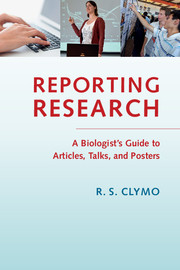1 - Writing a scientific article and getting it published
Published online by Cambridge University Press: 05 October 2014
Summary
A piece of scientific work is not complete until the results have been written up and published. Planning and doing the work is often exciting; writing about it may seem less so but is just as necessary, and delivers its own satisfaction when you see the work in print.
Why bother to acquire skill in describing your work? First, as you have to produce reports then better to do it well than badly. Second, the number of scientific articles published in a year has been doubling roughly every decade or two, but the time that any one scientist can spend reading does not increase. If you write badly those who ought to know your work may not be willing to make the effort needed to understand it, and those who do try will suspect that someone who writes so badly may have been just as confused and incompetent in doing the work as they are in trying to report it.
Most scientific articles exist between the ephemeral and the eternal. If you write concisely and clearly, your readers may begin to look forward to reading about your work, your reputation will rise, and the useful lifetime of your article will lengthen. Good writing cannot convert bad science into good – you cannot make a silk purse out of a sow’s ear – but you can ensure that your work is read.
- Type
- Chapter
- Information
- Reporting ResearchA Biologist's Guide to Articles, Talks, and Posters, pp. 3 - 68Publisher: Cambridge University PressPrint publication year: 2014



